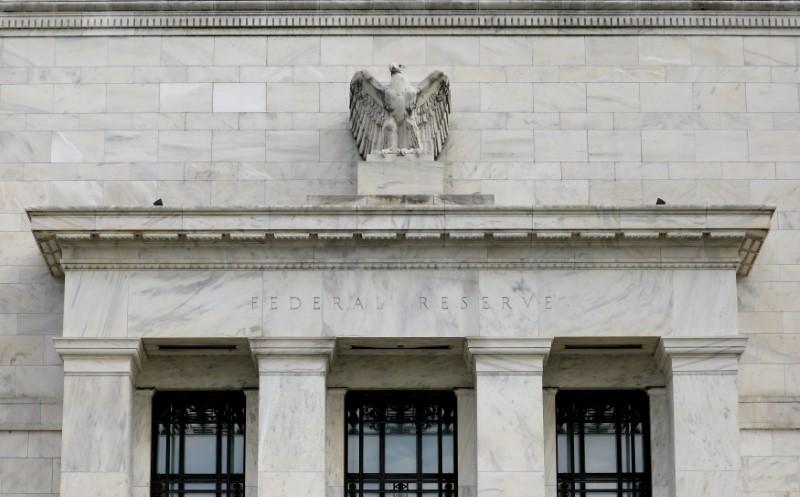WASHINGTON (Reuters) -The Federal Reserve on Wednesday brought forward its projections for the first post-pandemic interest rate hikes into 2023, citing an improved health situation and dropping a longstanding reference that the crisis was weighing on the economy.
New projections saw a majority of 11 of 18 U.S. central bank officials pencil in at least two quarter-percentage-point rate increases for 2023, even as officials pledged in a statement to keep policy supportive for now to encourage an ongoing jobs recovery.
That rate-hike view, coupled with a new forecast for three years of inflation running above the central bank’s 2% target, suggests concerns about overheating have risen sharply inside the Fed’s policy-setting committee.
“Progress on vaccinations has reduced the spread of COVID-19 in the United States” the Fed said in a statement after its latest policy meeting, a substantial shift for an institution that has conditioned policy for the past 14 months on battling the pandemic.
The Fed reiterated its promise to await “substantial further progress” before beginning to shift to policies less tuned to the pandemic and more to a fully open economy.
The new language does not mean a change in policy is imminent: The Fed on Wednesday held its benchmark short-term interest rate near zero and said it will continue to buy $120 billion in bonds each month to fuel the economic recovery.
But new economic and interest rate projections appeared to add some urgency to the Fed’s planning. Policymakers at the median now see the first rate increase coming in 2023 instead of 2024.
Related Coverage
See more stories
The projections showed the outlook for inflation jumping this year, though the price increases were still described as “transitory”. Overall economic growth is expected to hit 7%.
Together, the projections were indicative of a recovery moving faster than anticipated, and justifying discussions about the next phase of policy for the Fed.
“This change in stance jars a little with the Fed’s recent claims that the recent spike in inflation is temporary,” said James McCann, deputy chief economist at Aberdeen Standard Investments. “The pressure is on to explain the change in stance without setting hares running.”
Fed Chair Jerome Powell is scheduled to hold a news briefing at 2:30 p.m. EDT (1830 GMT) to elaborate on the statement, and possibly provide more details on how the Fed’s policy discussion will proceed.
JOBS SHORTFALL
The economy remains about 7.5 million jobs short of where it stood at the onset of the pandemic in February, 2020. Fed officials still describe that level as “far” from their goal of restoring maximum employment.
But, increasingly, they have also attributed the employment shortfall more to logistical issues around workers returning to jobs, factors which the Fed cannot easily change, than the strength of the economy. On the matters it can influence – the overall demand for goods and services, and the need for workers to provide them – the Fed feels it is closer to its goal.
There was roughly one job opening for every unemployed person as of May.
U.S. stocks dropped and bond yields rose after the release of the statement and the new economic and interest rate projections. The S&P 500 index was last down more than 1% and the yield on the benchmark 10-year U.S. Treasury note rose to about 1.55% from 1.49% before the statement’s release.
Source: Read Full Article
